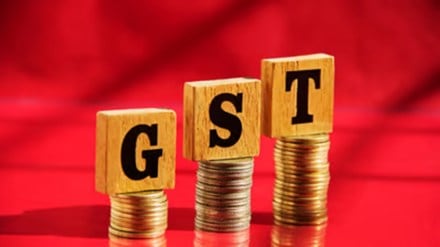The GST Council on Wednesday announced no GST cess except on tobacco, which will continue until loans given to states during Covid are repaid. The government expects to clear these loans by November 2025. According to government estimates, the removal of cess and the new tax structure will cost the Centre and states Rs 48,000 crore over a 12-month period. Analysts, however, say the actual impact could be higher. According to IDFC FIRST Bank Research, after adjusting for consumption patterns and cess transfers, the net revenue loss could reach Rs 95,000 crore, or 0.3% of GDP. Can India afford it, that’s the big question?
Net cost to centre and states estimated at Rs 95,000 crore
IDFC First Bank estimates that the net revenue loss could reach Rs 95,000 crore. “As per our estimate, net cost to centre plus states after assuming surplus cess collection in GST compensation account is utilized, is coming at Rs 95,000 crore (0.3% of GDP),” IDFC First bank noted.
The cess had earlier been a major revenue source, bringing in around Rs 1.5 trillion annually. With the new structure, the 40% slab on sin goods like alcohol and tobacco will directly add to GST revenue rather than being routed through the compensation fund.
Low fiscal slippage risk from GST Cut: IDFC FIRST Bank
Despite the removal of cess, economists believe the Centre’s finances will remain stable. IDFC FIRST Bank estimates the Centre’s fiscal cost in the second half of FY26 will be just 0.07% of GDP. “Fiscal slippage risk to the Centre remains low from the GST cut,” the report said.
The Centre’s fiscal deficit target of 4.4% of GDP is expected to be met, supported by higher excise duty collections, stronger dividends from PSUs, and the Reserve Bank of India’s record Rs 2.7 trillion payout.
Economists predict 0.6% rise in GDP
IDFC FIRST Bank expect the GST rate cuts and removal of cess to boost consumption across key sectors, including FMCG, consumer durables, medicines, cement and small vehicles. GDP growth is likely to rise by 0.6% in the next 12 months, with FY26 growth pegged at 6.6%.
CPI inflation could drop by up to 1%
Inflation is also expected to cool. If companies fully pass on the benefits of lower taxes, consumer price inflation could drop by 1 percentage point. Even with partial pass-through, headline CPI may ease by 0.6 to 0.8%, bringing the FY26 estimate down to 2.4% from 2.7%.
